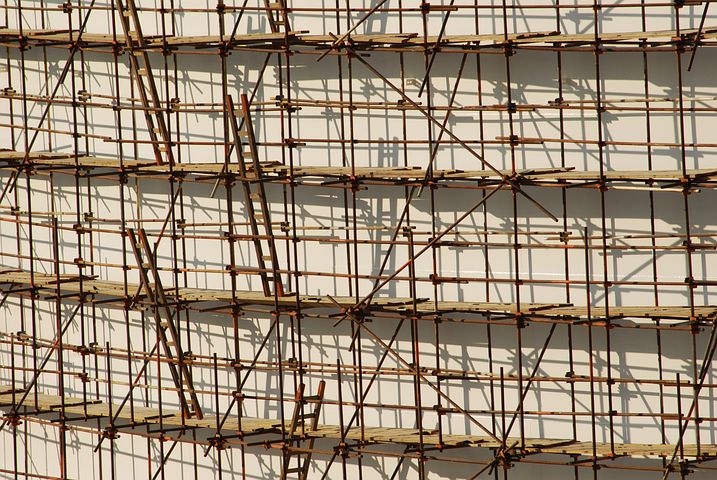Scaffolding is a temporary structure on the outside of a building that is usually made from wooden planks and metal poles. This equipment is often used by workmen during construction jobs such as building, repairing and cleaning. This scaffold can be used both on residential and commercial jobs.
What many people don’t realize is that there are many different types of working platforms. Keep reading to find out the names and purposes of some of the most common types.
Type 1: Single
Single scaffolding is sometimes known as brick layers scaffolding. As the name indicates, the primary use for this type of working structure is to assist with brick masonry.
This type of structure is generally assembled parallel to the wall in which it is supporting; usually at a distance of about 1.2 metres away. Single structures are comprised of standards, ledgers and putlogs.
With this type of platform, the aim is not only to support the structural integrity of the building, but also to assist the tradespeople by helping them reach the desired height.
Type 2: Cantilever
This type of scaffolding is often referred to as a single frame type structure, and therefore it is quite different to many other working platforms. The standards are supported on needles, which are then attached through holes in the wall.
Cantilever structures are not considered as being the most stable type of support structure; this is why they are only used in certain situations. The most common use for these platforms is when the ground is unable to support the standards. Another frequent use for cantilever platforms is when the ground near the wall needs to be free from traffic and when the upper part of the wall is under construction.
Type 3: Steel
As the name suggests, this type of scaffolding is made out of steel. The working platform is made from steel tubes which are then fitted together with steel couplers. This form of structure is renowned for being easy and quick to assemble and disassemble, which makes it a perfect choice for construction sites and projects that will not take very long to complete.
Steel structures are also incredibly durable and are even fire resistant. Furthermore, these types of working platforms are known for being stronger and safer than many of the other options currently on the market.
One disadvantage of these structures is that they are more expensive than many other forms of scaffolding. Despite this, their high safety rating and durability mean that they are one of the most widely used forms of working platform worldwide.
Type 4: Suspended
Suspended scaffolding is different from the other types of working structure for one main reason; it is attached to the roof of the building instead of the floor. Suspended structures work through the use of a rope and pully system and are incredibly useful due to the fact that they can be easily raised or lowered. This makes it easy to reach the needed working height.
Whilst many other forms of working platform are used as a support for the building, suspended are most commonly used for repair work or cleaning. They do not help to support the building and therefore would not be of use if the structural integrity is compromised. Oftentimes, this type of working platform is used for jobs such as window cleaning on large commercial buildings.
As indicated above, there are several different types of working platform, and what many people don’t realise is that each of these has a specific job. The type of working platform used on a construction site will depend on what it is needed for, the height it is needed to reach and how many workers will be using it. It is important to note that working platforms are an integral building tool, meaning it is often challenging, or impossible to build, repair or clean without them. Whilst working platforms are useful, if used improperly they can be dangerous; therefore, it is important to ensure that they are being used in the correct way with all the safety procedures being followed.
